Exploringthe Hall of Plaques in Nantou Ancient Town
Writer: Sterling Platt | Editor: Lin Qiuying | From: Original | Updated: 2025-09-23
Living in Shenzhen, you get used to the narrative of newness. This is a city that sprang from the earth just a few decades ago, a testament to forward-facing development. So, when I found myself wandering the narrow, stone-paved lanes of Nantou Ancient Town, it felt like discovering a hidden world. And within, Ifound an even more surprising treasure: a museum dedicated entirely to carved wooden plaques.
I’ll admit, a Hall of Plaques doesn’t immediately scream excitement. But standing at its entrance, peering from a weathered stone threshold into a thoughtfully lit space, I was intrigued. This place promised a different kind of story, one told not in steel and silicon, but in aged wood and faded gold leaf.
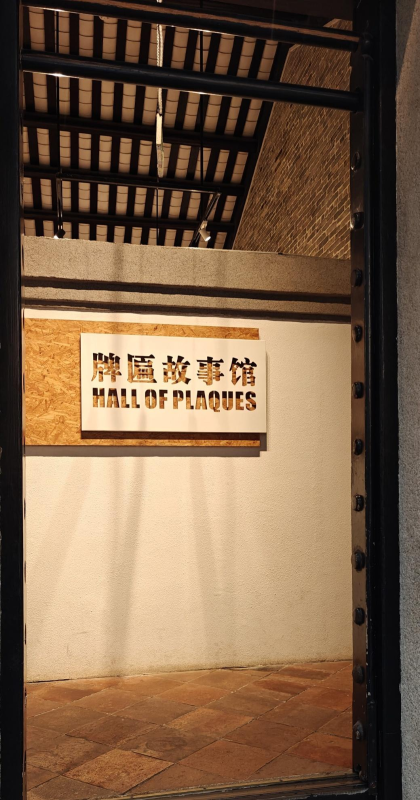
The unassuming entrance to the Hall of Plaques, nestled within the historic Nantou Ancient Town.
Inside, I learned that these seemingly simple objects are anything but. Each plaque is a dense cultural artifact, a snapshot of a moment in time. They are silent storytellers, revealing a world of bustling commerce, profound family values, and rigid social hierarchies. In a region like Lingnan— variously called southern China—which has always been a hub of trade and pragmatic ambition, these plaques were the original brand logos, mission statements, and declarations of identity all rolled into one.
The exhibition beautifully illustrates the central role these signs played in the region’s vibrant commercial life. For centuries, this area was a nexus of trade on the Maritime Silk Road, and Nantou itself was a key defensive and commercial outpost. The plaques from this era are a testament to that energy.
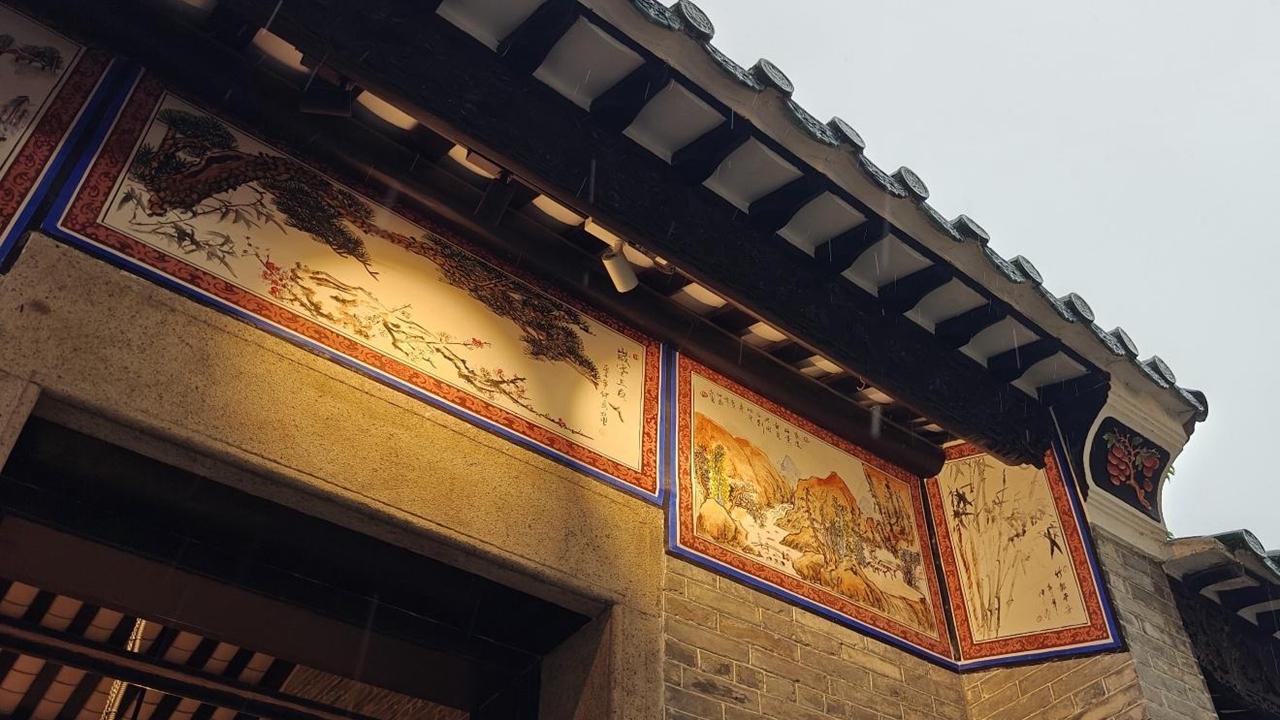 Intricate murals adorn the exterior of the Hall of Plaques, which is housed in a traditional Lingnan building in Nantou.
Intricate murals adorn the exterior of the Hall of Plaques, which is housed in a traditional Lingnan building in Nantou.
You can see the pride of craftsmanship in every groove and character. I was particularly struck by a stunningly intricate gilded plaque from a Qing Dynasty silk shop that specialized in opera costumes.
In an era before digital advertising, this magnificent object, carved and gleaming, was the ultimate statement of quality. It declared to the world that this shop, “Guang Fu Xiang,” was the best—its skills so renowned that even the emperor’s own theatrical troupes came calling. It’s a powerful reminder that the drive for excellence and recognition is nothing new in this part of the world.
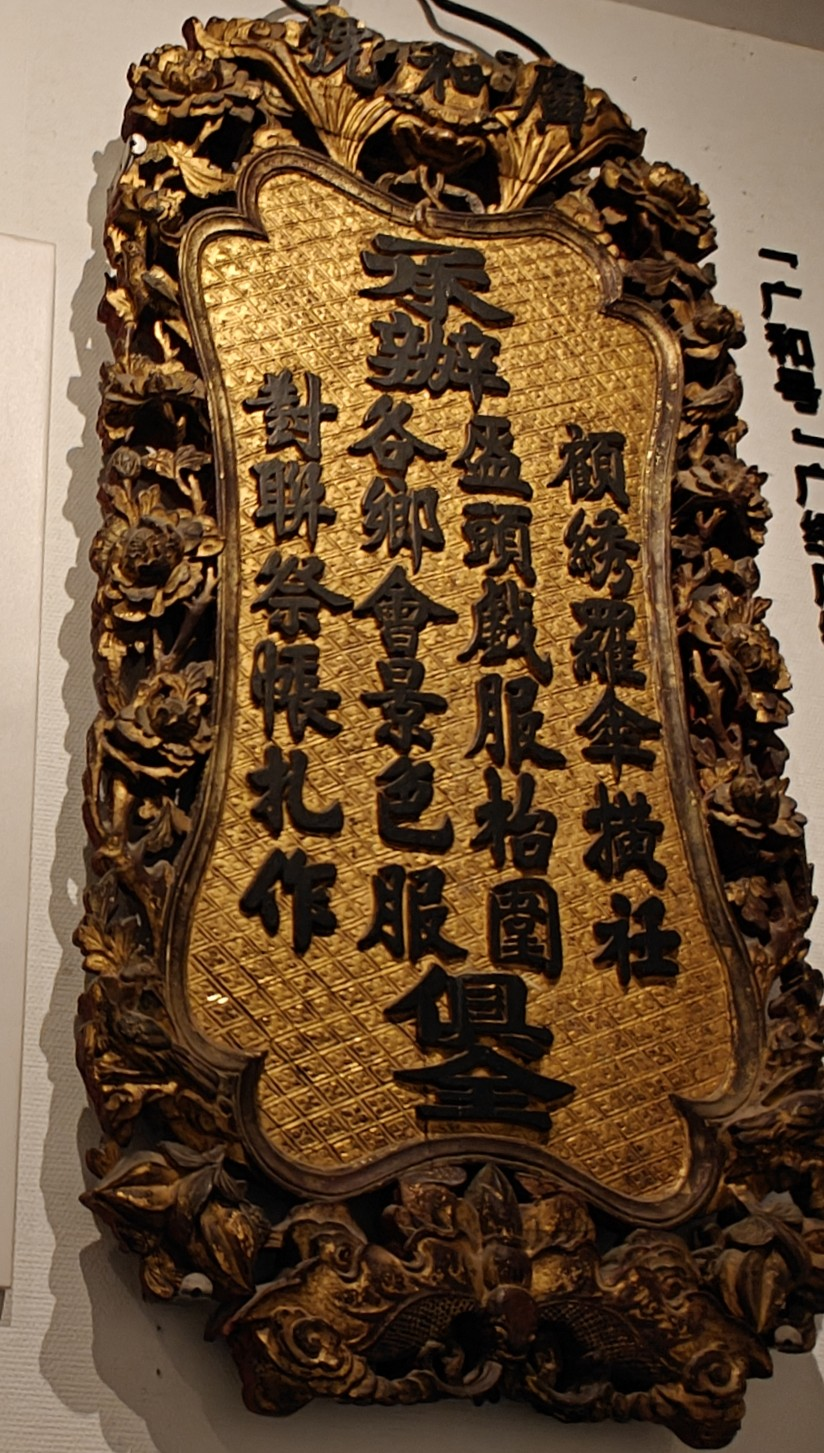
This gilded and carved plaque from the Qing Dynasty belonged to the “Guang Fu Xiang” embroidery shop, once a celebrated maker of Cantonese opera costumes.
But the stories aren’t limited to grand commercial enterprises. The exhibition also includes artifacts from everyday businesses, each with its own history. A heavy, circular wooden mold from a local bakery, used to press patterns into pastries, sat quietly in a display case. It’s a humble object, yet it speaks volumes about a community’s daily rituals and the artistry embedded in simple commerce.
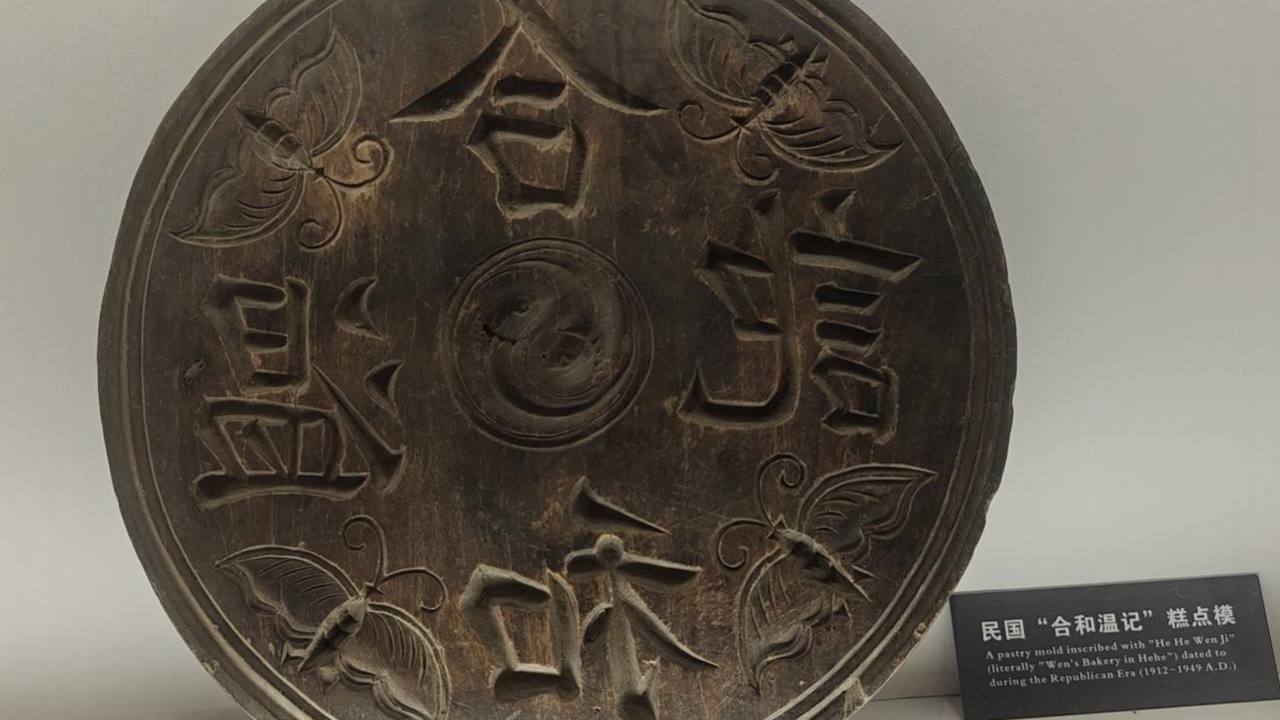
A pastry mold for “He He Wen Ji” bakery from the first half of 20thcentury, an example of the rich commercial artistry of the period.
Beyond the world of trade, the plaques reveal another, more formidable side of life: the rigid structure of the imperial state. I stood for a long time before a tall, vermilion-colored plaque mounted on a handle. The placard explained this was a ceremonial parade plaque.
When a government official moved through the town, this would be carried ahead of him. Accompanied by the clanging of gongs, it was a mobile assertion of power, demanding that commoners make way. It’s a stark, visceral symbol of a feudal society, its strict codes and clear distinctions a world away from the fluid, modern metropolis just outside Nantou’s walls.
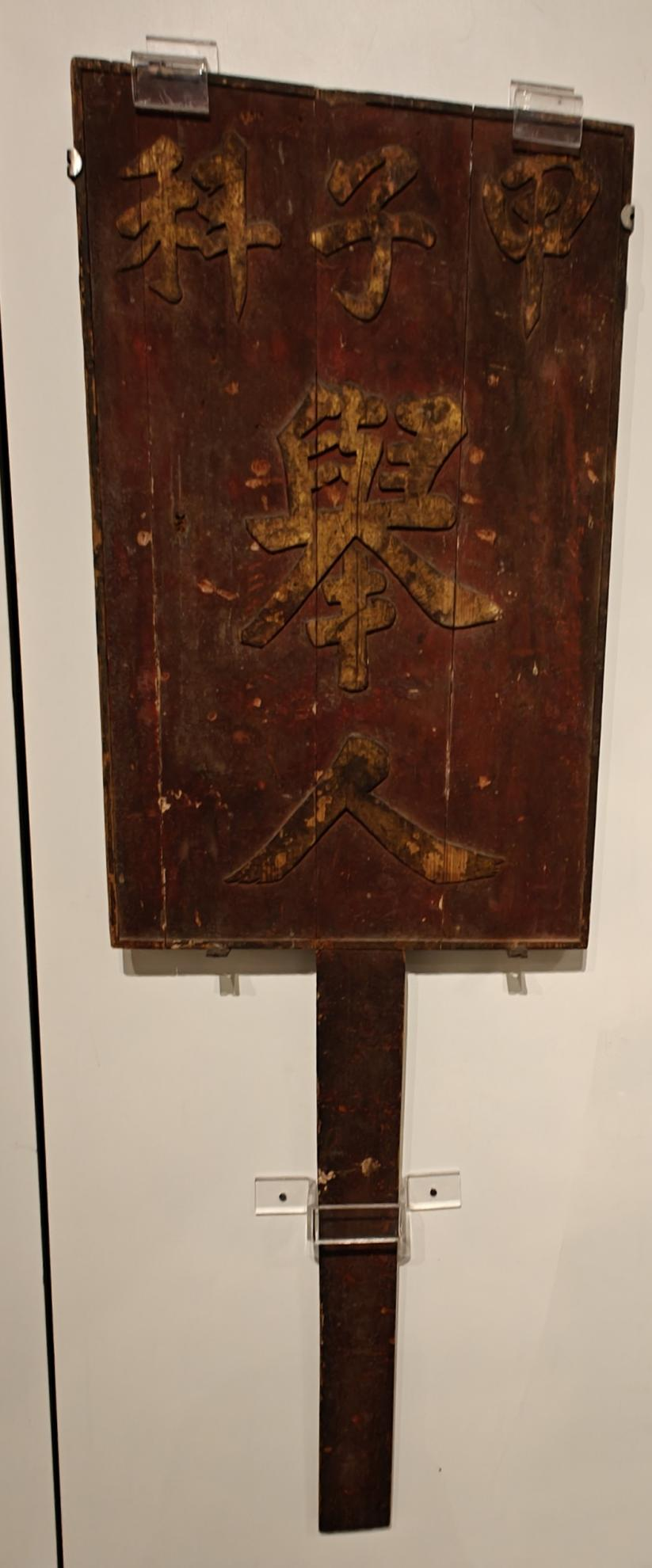
A hand-held ceremonial parade plaque from the Qing Dynasty.
Leaving the quiet hall and stepping back into the lively lanes of the ancient town, I felt a deeper appreciation for this city. Shenzhen may be young, but it is built upon layers of history. It is a city of migrants, as the museum notes, but migration to this area has been happening for a long time. The Hall of Plaques offers a rare and tangible connection to that past. It proves that long before the first skyscraper broke the horizon, this was a place of ambition, art, and complex human stories, all carved into wood.